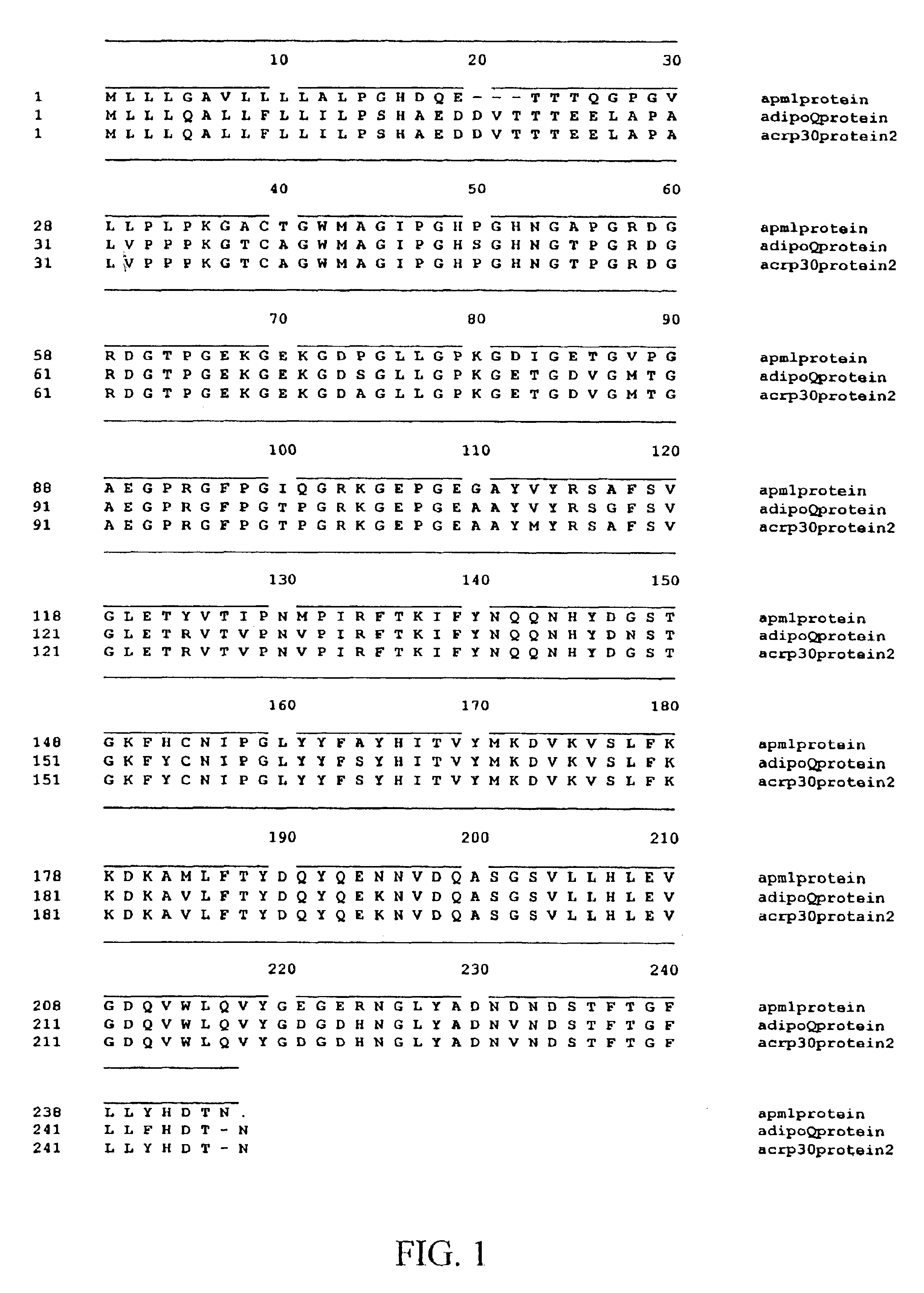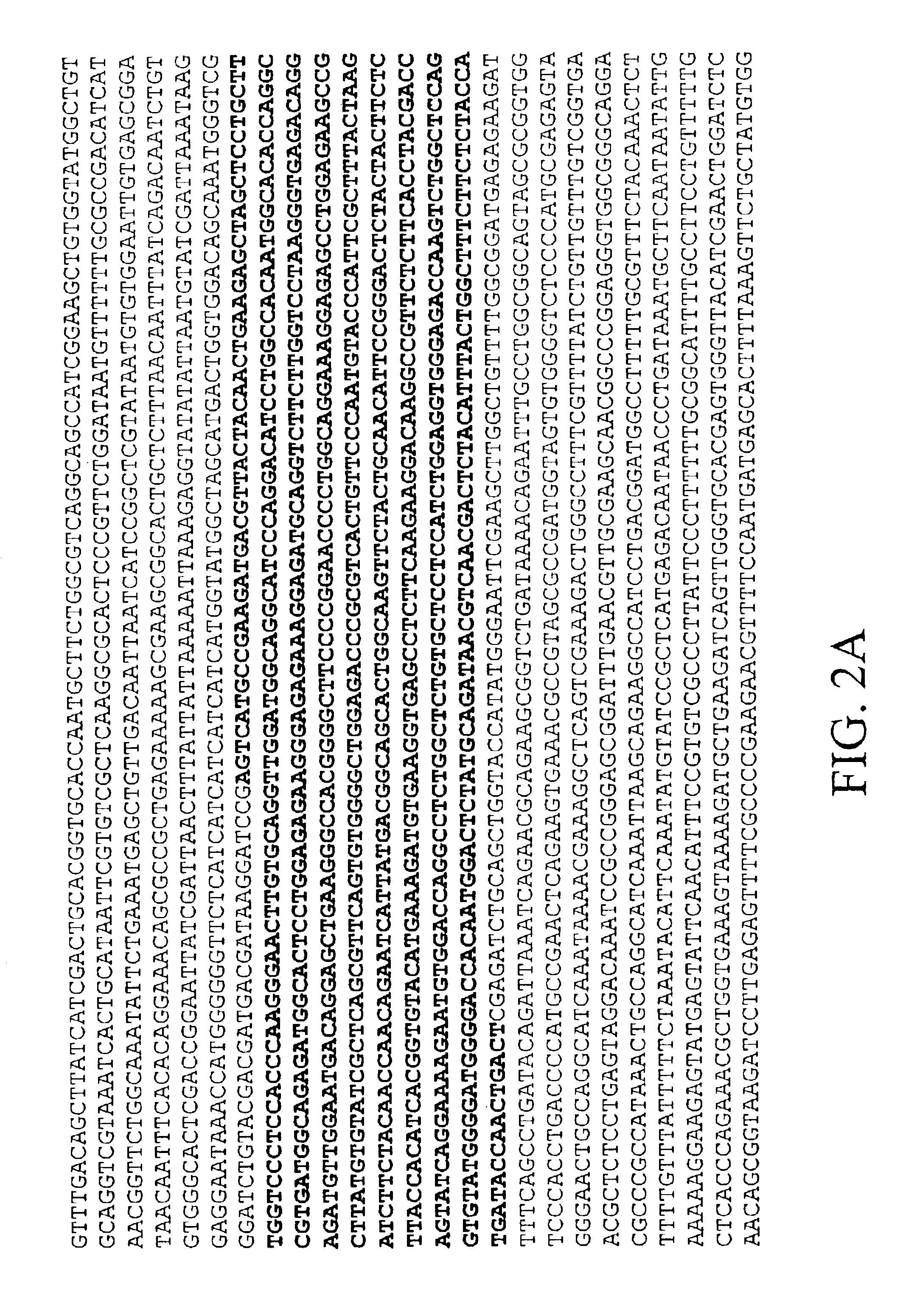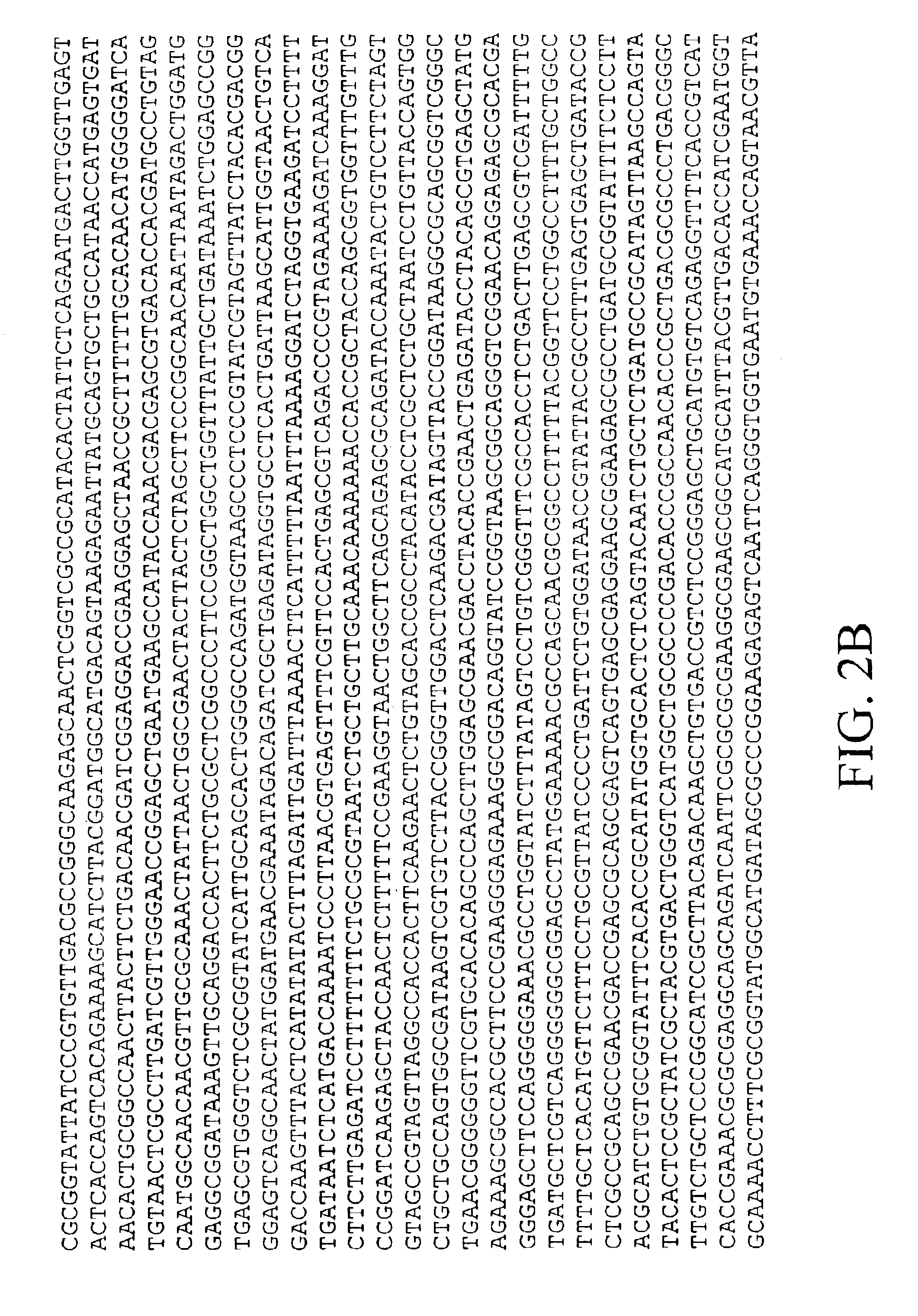OBG3 globular head and uses thereof
a globular head and globular head technology, applied in the field of metabolic research, to achieve the effects of reducing the level of free fatty acids, preventing weight gain, and controlling blood glucose levels
- Summary
- Abstract
- Description
- Claims
- Application Information
AI Technical Summary
Benefits of technology
Problems solved by technology
Method used
Image
Examples
example 1
Production of Recombinant OBG3
[0501]An exemplary method for generating recombinant OBG3 is given below. Although the method describes the production of the mouse analog, a person with skill in the art would be able to use the information provided to produce other OBG3 analogs, including but not limited to the human analog. An alignment of the amino acid sequences of the human (APM1) and mouse (AdipoQ and ACRP30) OBG3 is shown in FIG. 1.
[0502]The recombinant OBG3 analog is cloned in pTRC His B (Invitrogen) between BamH1 and Xho1 (FIG. 2) and maintained in E. coli DH5-alpha. The sequence of the OBG3 insert corresponds to ACRP30 genbank U37222 bases 88 to 791 except in position 382 where in #3 G replaces A found in ACRP 30 (V instead of M). The corresponding nucleotide in AdipoQ U49915 is G as in clone #3. The amino acid V is also conserved in the human sequence APM1 D45371.
Culture:
[0503]Plate out bacteria in LB agar media containing 100 μg / mL ampicillin. Inoculate 1 colony into 5 mL m...
example 2
Generation of Globular OBG3 by Enzymatic Cleavage
[0531]Incubate purified OBG3 (obtained as described above or through equivalent method) with acetylated Trypsin-Type V-S from Bovine Pancreas (Sigma E.C.=3.4.21.4) at 400 u / mg protein at 25° C. for 10 min.
[0532]Stop reaction by running the sample over a Poly-Prep Column (Biorad 731-1550) at +4° C. containing immobilized Trypsin inhibitor.
[0533]Collect 1.0 mL fractions. Determine protein concentration.
[0534]Pool the protein containing fractions and dialyze extensively against PBS using dialysis tubing with M.W. cutoff=10,000 da.
[0535]Concentrate on Amicon YM-10 Centricon Filter (Millipore, M. W. cutoff=10,000 da). Sterile filter.
[0536]Determine final protein concentration using Markwell's modified Lowry procedure (1981) or BCA protein assay (Pierce Chemical Co, Rockford, Ill.) and BSA as standard.
[0537]Check purity and efficiency of cleavage by SDS-PAGE analysis using a 4-20% gradient gel. The intact OBG3 migrates as a single band at a...
example 3
Generation of gOBG3 by Recombinant Methodology Restriction Site Cloning
[0539]A first approach is to look for unique restriction sites near the beginning of the globular head region (nucleic acid sequences of mouse and human OBG3 polypeptides are provided in the sequence listing). If present, it can be used to cleave within the 5′ collagen-like region and generate a C-terminal fragment comprised of the globular head region. If a unique site is not present, it is also possible, although more difficult, to do this using restriction enzymes that cut in more than one location by doing partial digestions. The 3′ end of the globular head can be cut from its vector backbone using an appropriate enzyme. The globular head can then be cloned into an expression vector and constructs containing the correct fragments can be identified. For AdipoQ, Tau I seems to be a unique enzyme that would separate the collagen tail from the globular head.
[0540]PCR Cloning
[0541]Another approach is to PCR the re...
PUM
| Property | Measurement | Unit |
|---|---|---|
| Length | aaaaa | aaaaa |
| Mass | aaaaa | aaaaa |
| Level | aaaaa | aaaaa |
Abstract
Description
Claims
Application Information
 Login to View More
Login to View More - R&D
- Intellectual Property
- Life Sciences
- Materials
- Tech Scout
- Unparalleled Data Quality
- Higher Quality Content
- 60% Fewer Hallucinations
Browse by: Latest US Patents, China's latest patents, Technical Efficacy Thesaurus, Application Domain, Technology Topic, Popular Technical Reports.
© 2025 PatSnap. All rights reserved.Legal|Privacy policy|Modern Slavery Act Transparency Statement|Sitemap|About US| Contact US: help@patsnap.com



